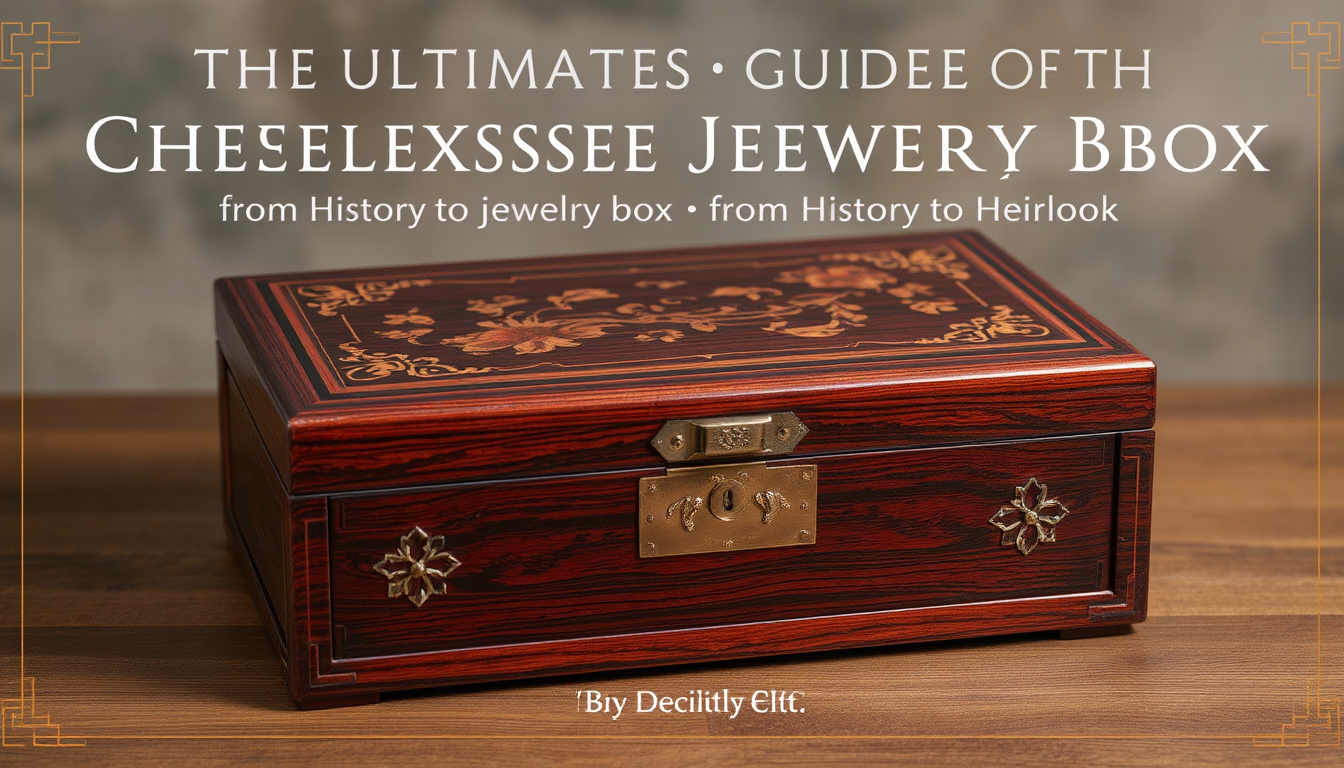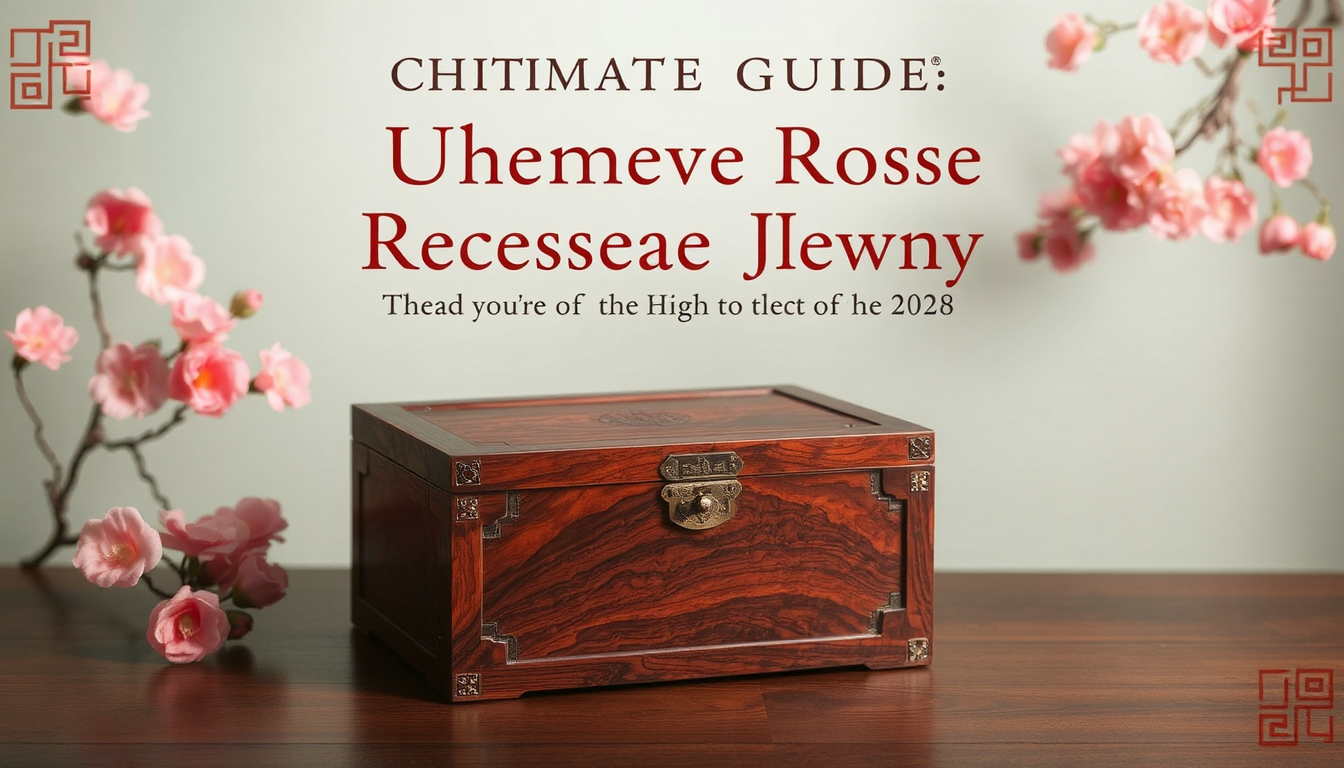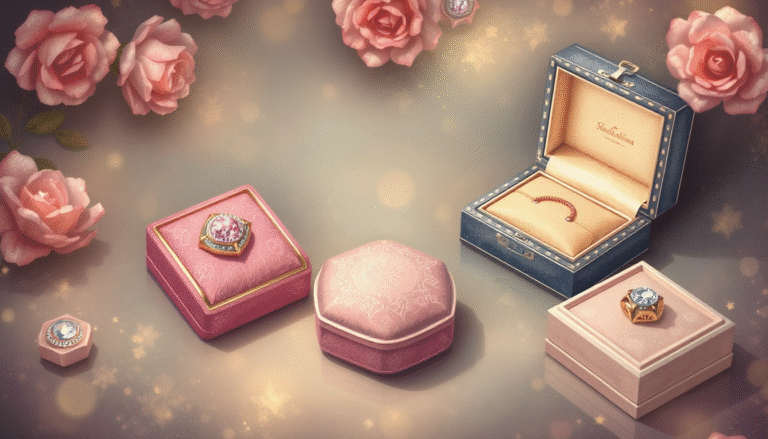Introduction: More Than Just a Box
To possess a Chinese rosewood jewelry box is to own not just a box. It’s history held in wood and brass.
These are items that intertwine materials, art and ideas in incredible ways. The wood is rare, too — and valuable. And their joints are incredibly tight and well-made… this kind of quality workmanship takes years to learn. Every carving has significance, drawn from centuries of tradition. They are both treasures and protectors of treasure.
Let’s take a trip to the world of the chinese rosewood jewelry box. We’ll find out what they are made from and how to identify the real article. I’ll also tell you how to keep these treasures in good condition for your kids and grandkids.
The Heart of the Matter: What “Rosewood” Means in a Chinese Context

Rosewood is an easier term for many to say, but for many can bring about some confusion. It means something very particular and valuable in the world of Chinese antiques.
We need to understand Hongmu (红木), which means “red wood.” This isn’t just about color. It’s a special group of dense, valuable hardwoods that follow Chinese national standards. These woods have been used in fine furniture for hundreds of years.
There are a couple of woods that rise to the top in terms of that tradition. They are the “holy trinity” of traditional Chinese hardwoods:
-
Zitan (紫檀): Considered the “Emperor’s wood”, this is the highest quality of Chinese wood. It’s so heavy it would sink in water. Zitan Purple very deep purple black naturally develops an attractive luster.
-
Huanghuali (黄花梨): This is the nine-letter name, meaning ‘yellow flowering pear wood.’ The color is a warm honey-brown and it smells sweet. Its beautiful grain patterns — which can resemble faces or mountains (guilian mian) — are much loved.
-
Suanzhi (酸枝): Also referred to as “sourwood,” this wood’s name came from the pungent odor it emits when cut. It varies from a brownish-red to a deep purple. This was a common high quality choice, when the less common woods were not on hand.
These woods were most popular during the Ming and Qing dynasties. They showed high status among the royal court and scholars. Studies on traditional Chinese furniture making show that the wood itself told people about the owner’s importance.
Today, many of these precious woods like Zitan, and Huanghuali, are guarded by international regulation. The result is that antique items are extremely few, and so valuable. Contemporary creation is heavily regulated and sometimes incorporates more sustainable varieties of Hongmu.
The Language of Craft: Decoding Symbolism and Construction
A genuine Chinese rosewood jewelry box has an anecdote. This story isn’t in words. It is in the way the box is constructed and the pictures that adorn it.
Construction & Hardware
The first sign of quality is how the pieces fit together. Master craftsmen used mortise and tenon joints. These are wood pieces that lock together without nails or glue. This method made boxes strong and able to handle changes in humidity.
Look closely at the metal parts. Locks,hinges, and drawer pulls would be of brass, referred to as baitong or huangtong. These weren’t just useful parts. They blessed the box with beauty and purpose. Floating rings clasp on bat-shaped Chinese lock plate or ruyi-shaped on simple forms were especially overtonesded.
Symbolism in Carvings & Inlays
Every design carved or inlaid on a box has a purpose. It’s a visual language of good wishes, hopes, and cultural values. As shown in common symbols in Chinese art, decorations were rarely just for looks.
We often see these lucky symbols:
-
Dragon & Phoenix: They are symbolise the Emperor and Empress. United, they represent wedded bliss and synnergy.
-
Bats (蝙蝠, biānfú): These words sound alike, which is why the Chinese believe bats are a good omen. Five bats grouped together represent the Five Blessings: longevity, wealth, health, love of virtue, and a peaceful death.
-
“Shou” Symbol (寿): Representative of long life. “It’s a really popular and powerful symbol that we see often in its sort of stylized, round shapes.
-
Peonies & Lotuses: The title of “king of flowers” belongs to peonies, representing wealth and eminence. The lotus rises from the mud clean and bright, symbolizing purity, truth and spiritual progress.
-
Jade or Stone Inlays: Higher quality boxes will be inlaid. Jade is especially prized, symbolizing purity, dignity, and eternity. Scenes were also composed with materials such as mother-of-pearl or soapstone.
A Collector’s Eye: How to Authenticate a Vintage Chinese Rosewood Jewelry Box

Distinguishing an authentic antique from a new copy requires a trained eye an a feel for its surface. Whether considering a piece or not, we seek markers of age and handmade quality that can’t be easily copied.
A real old piece looks old. The wood wears a deep gloss that can only be made through years of handling, not at the factory. That’s what we seek — the story the life of an object tells.
For you to decide, here’s a scorecard. Compare the look to what a real vintage piece would look like verses the modern copy.
| Feature | Signs of Authenticity (Vintage) | Signs of Reproduction (Modern) |
| The Wood Itself | Deep, soft, lustrous glow (patina) from handling. Uneven coloration from sun exposure and age. A faint, natural woody or fragrant scent. | Uniform, flat, or overly glossy finish. May smell of chemical stains, varnish, or lacquer. Color is too perfect and even. |
| Weight & Density | Surprisingly heavy for its size. Authentic rosewoods like Zitan and Suanzhi are exceptionally dense. | Often lighter than expected. May be made of a cheaper, less dense wood stained to look like rosewood. |
| Construction & Joinery | Visible, hand-cut joinery. Look for slight irregularities or scribe marks that indicate hand-tooling. Dovetails or mortise-and-tenon joints are paramount. | Perfect, machine-cut joints. Look inside for modern fasteners like Phillip’s head screws, staples, or excessive glue residue. |
| Hardware | Hand-beaten or cast brass with a natural, uneven tarnish (verdigris). Simple pin hinges or complex, interlocking hinges. The lock mechanism is often simple but robust. | Thin, stamped brass that feels flimsy. Artificial, uniform “aging” effects. Modern, precise piano hinges are a major red flag. |
| Interior Lining | Lined with silk or paper brocade that shows genuine age: fading, slight thinning, or minor, delicate fraying at the edges. | Bright, pristine linings made of modern synthetic fabrics like polyester or nylon. The material feels new and may have a chemical sheen. |
| Signs of Wear | Wear is logical and smooth to the touch. It appears on high-contact points: corners, the area around the lock, the bottom edges. | Wear can be artificially created with sandpaper, looking scratched rather than worn smooth. Wear patterns might be in illogical places. |
Preserving Your Treasure: A Practical Guide to Care and Maintenance

Owning a Chinese rosewood jewelry box means becoming its caretaker. Good care isn’t about making it look new. It’s about saving its history and quality for the future. The most important rule is: do less, not more.
1. Gentle Cleaning
Strong cleaning can remove the valuable patina. Never use wet cloths or modern furniture sprays like Pledge. These contain chemicals that can harm the finish.
For normal maintenance, dust with a dry, soft microfiber cloth. If there’s dirt accumulation, clean gently with a barely moist cloth of distilled water that has been wrung well until almost dry. Wipe softly, and immediately dry with a clean cloth.
2. Polishing & Conditioning
Don’t polish too much. Its natural oils and the built-up patina contribute to the best protection for the wood. The wood can be conditioned to retain its luster, at most yearly.
Fine Furniture -Use a high quality natural paste wax that contains beeswax and carnauba wax. Here’s how the pros do it: Put a bit of wax onto a soft, lint-free cloth. Rub it in lightly on the surface in the direction of the wood. Let sit for 10-15 minutes and then, with a clean, soft cloth, buff it to a nice deep shine.
3. Environmental Control
Like any fine wooden thing, these boxes respond to their environment. Changes are the enemy.
Store the box away from direct sunlight, as it’s easy to fade the wood and dry out the finish. Don’t put it near heating or air conditioning ducts. Rapid fluctuations in temperature and humidity may cause the wood to expand or contract, leading to cracked wood or sticking drawers.
4. Brass Hardware Care
Do not attempt to polish the brass components to render them shiny. The propensity of brass to discolor over time is characteristic of the age of the box and the warm patina it allows to develop. There’s a simple solution to cleaning it, too: A little dusting off with a dry cloth, that way you can keep your history where it should be.
Conclusion: An Heirloom for Generations

We’ve journeyed from understanding the prestigious Hongmu woods to decoding the rich symbolism in the carvings. We’ve learned to look with a collector’s eye and to preserve these treasures with gentle care.
A Chinese rosewood jewelry box is more than a receptacle. It has culture and art you can reach out and touch. It’s a tale waiting to be handed down as a cherished family heirloom for generations to come.
FAQ
-
What makes Chinese rosewood jewelry boxes so valuable?
Chinese rosewood (Hongmu) jewelry cases are an example of such a collectible item, as they are crafted from a particularly rare, dense hardwood, which includes wood known as Zitan and Huanghuali, in addition to presenting a variety of elaborate hand-made qualities such as mortise, tenon joinery and cultural symbolism in its carving. -
How can I tell if my Chinese rosewood jewelry box is authentic?
The Real Thing True Chinese jewelry Do The authentic Tightly rosewood jewelry boxes are more mottle( it does not have the higher sheen), heavier to the sheen, have had hand-cut wood working, hand-made brass hardware with old tarnish, and the wear is consistent with age on high-wear areas. -
What symbols should I look for on a traditional Chinese rosewood jewelry box?
Seek out dragons and phoenixes (perfect marriage), bats (good luck), the “Shou” character (long life), peonies (wealth and honor) and lotuses (purity) — all symbols of good wishes and cultural ideals. -
How should I properly care for my Chinese rosewood jewelry box?
Take care of your box by dusting with a dry soft microfiber cloth, never wet clean the box as it can cause peeling, don’t use any kind of chemical sprays, condition once a year with natural beeswax, store it in a place out of direct sunlight or temperature changes, and protect the patina on the brass hardware. -
Are antique Chinese rosewood jewelry boxes still available in 2025?
Yes, in 2025 they are still available but the antique ones like these Antique Chinese Rosewood Jewelry Boxes are becoming more and more rare and valuable, especially if made from woods like Zitan and Huanghuali because these source woods are being protected. So remember to only buy recent specimens or ones sewn in traditional styles, and you’re not only celebrating history, you’re supporting a more eco-friendly reinvention of the craft, complete with sustainable Hongmu species under tight regulation.





